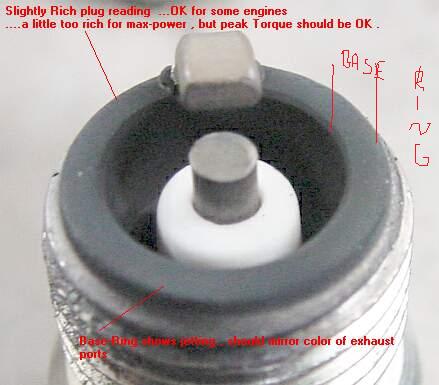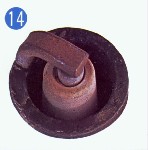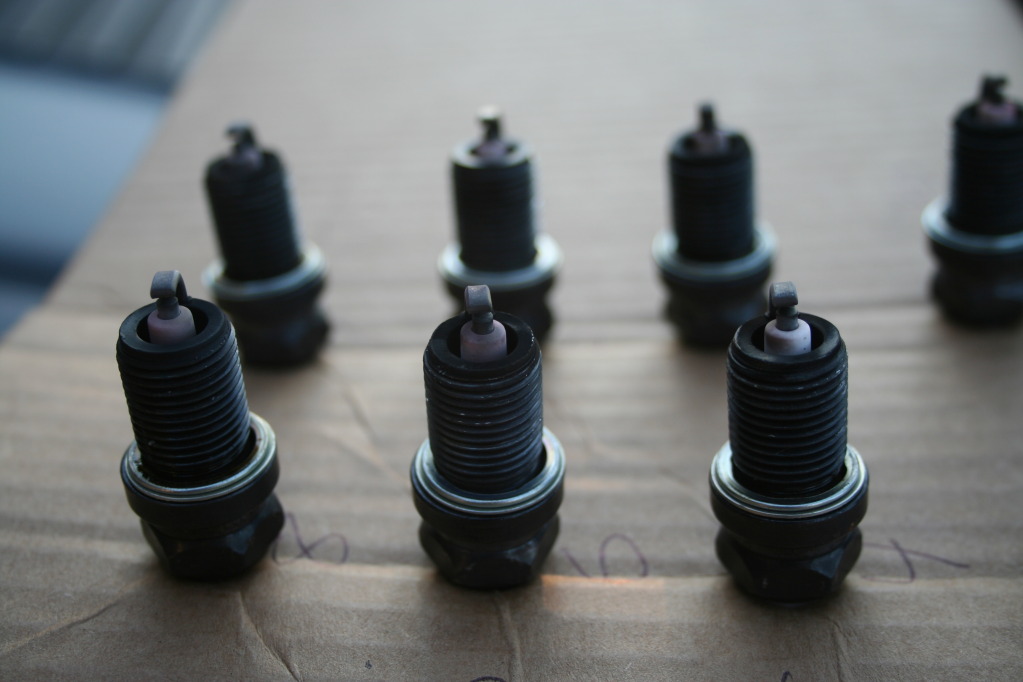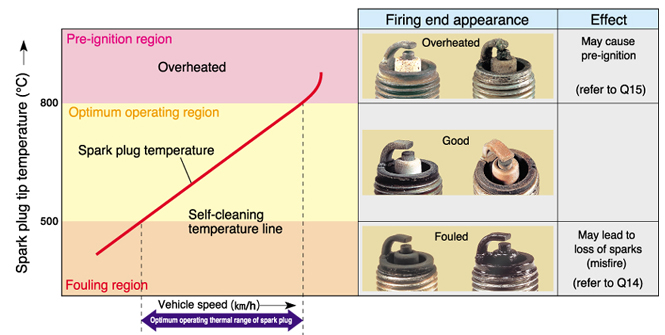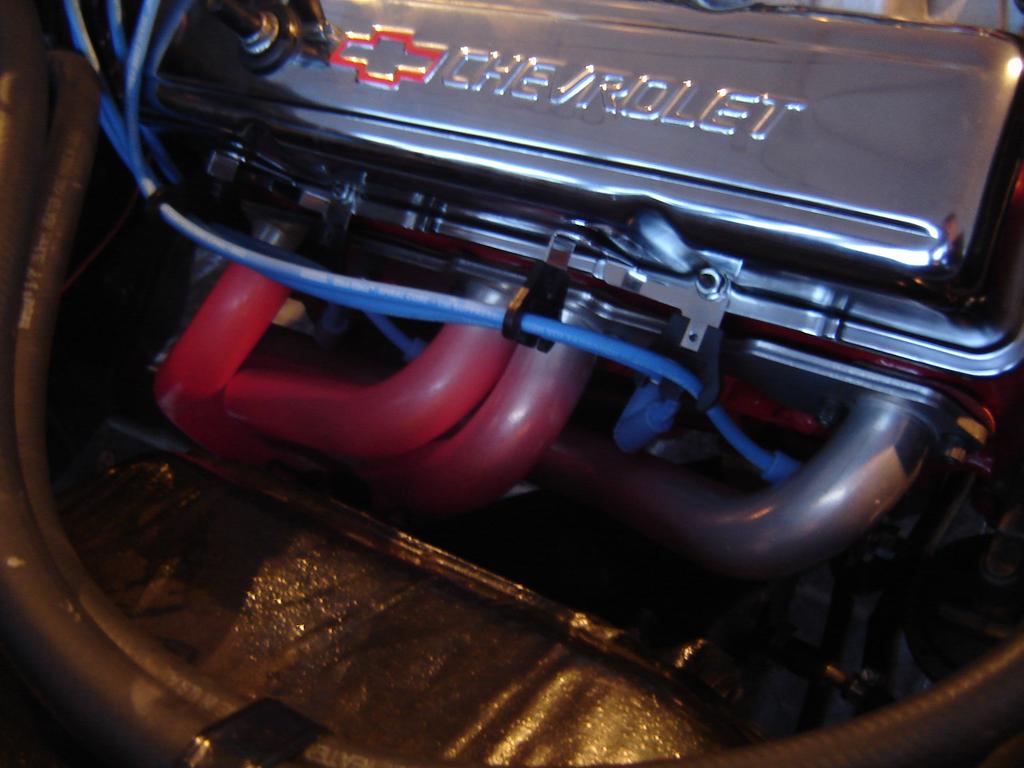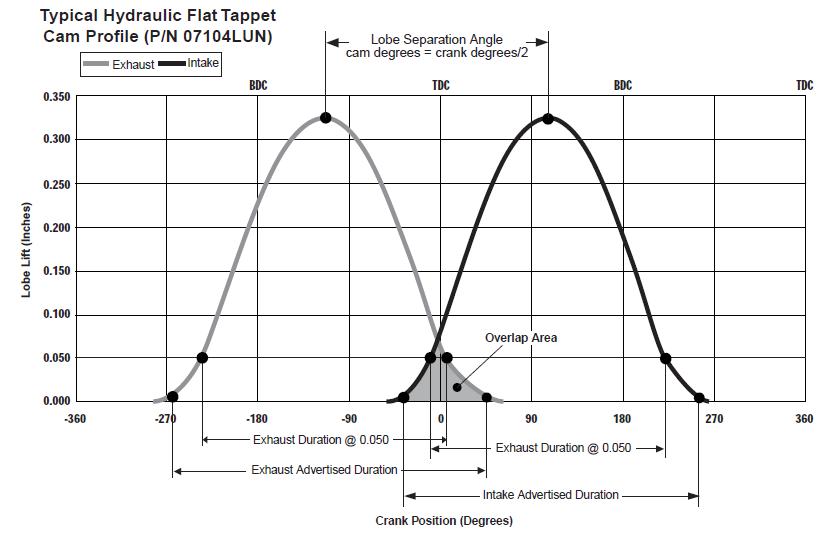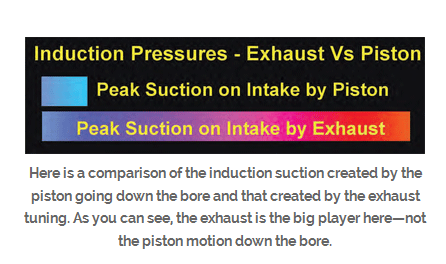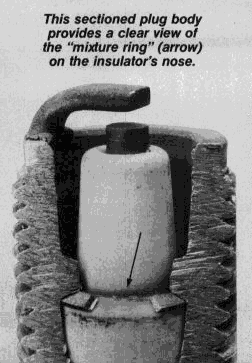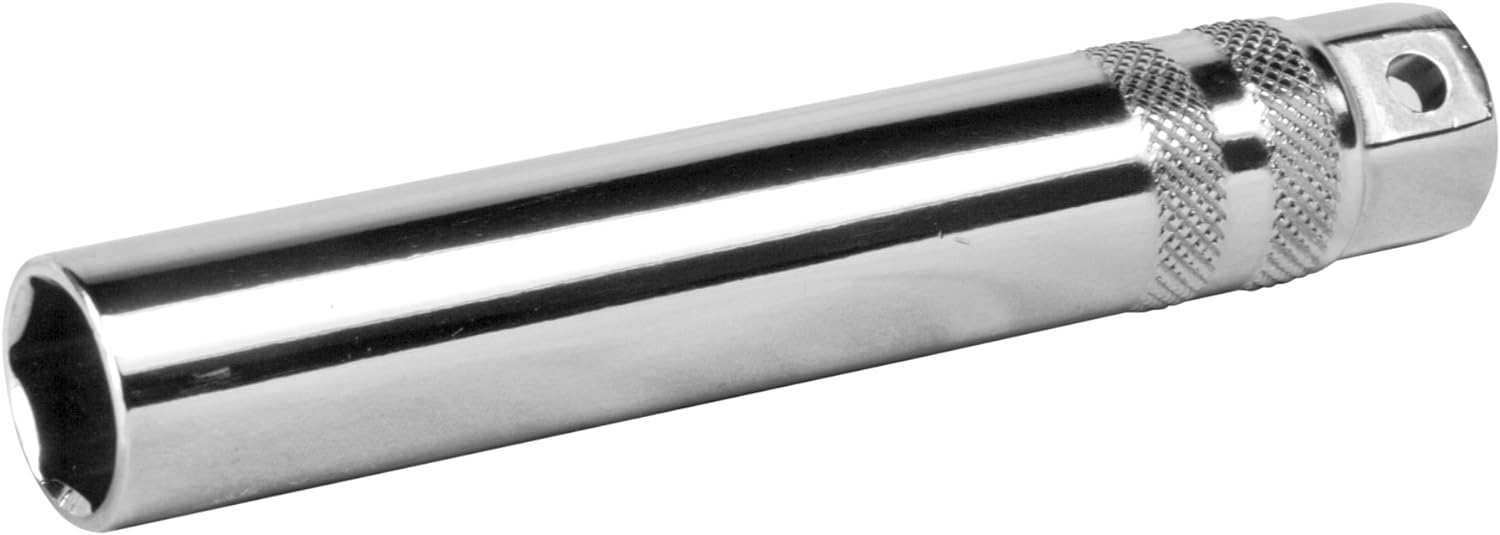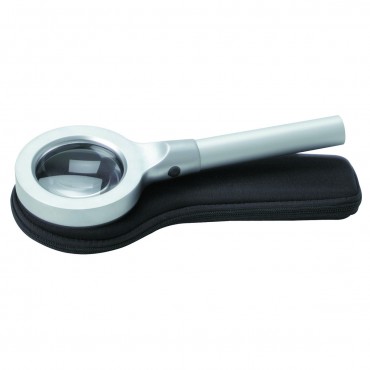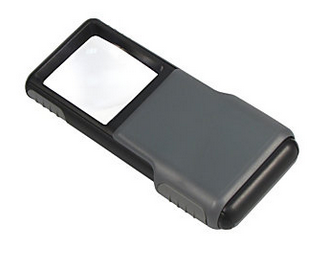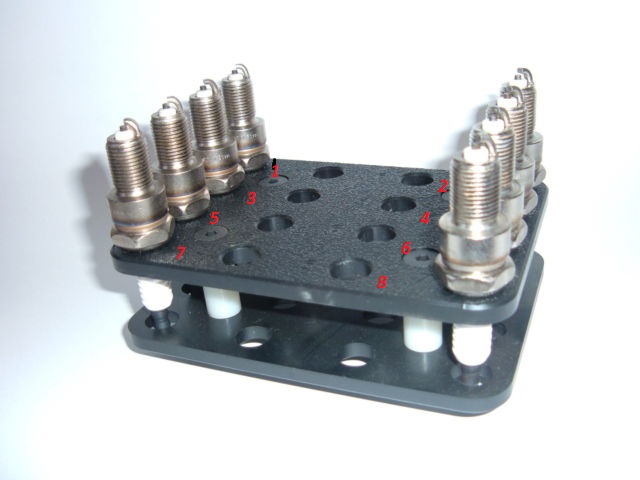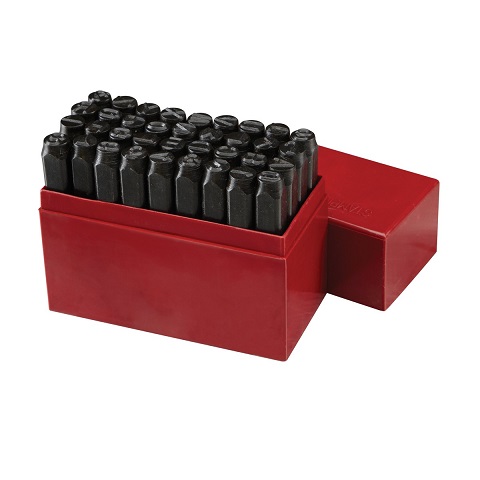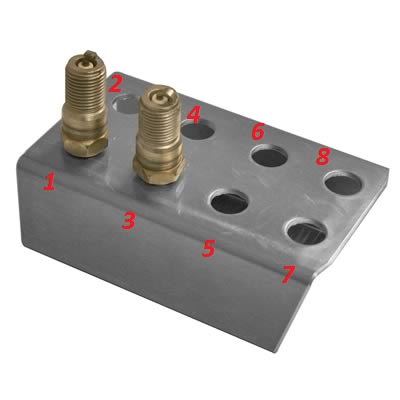YOU REALLY NEED TO READ THRU ALL THESE THREADS AND SUB LINKS TO GET A GOOD BASIC UNDERSTANDING
http://www.4secondsflat.com/Spark_plug_reading.html
http://www.strappe.com/plugs.html
http://garage.grumpysperformance.co...-with-ignition-knock-issues.14293/#post-72961
3
http://www.empirenet.com/pkelley2/sparkplugreading.html
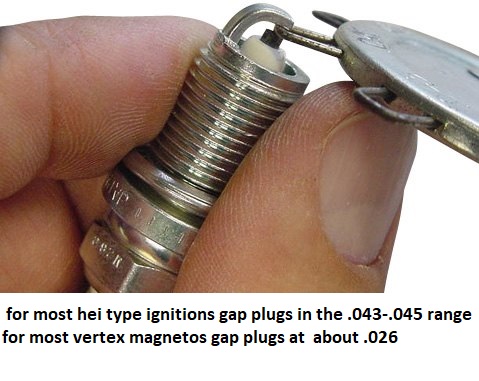
The "Ground Strap" = Heat Range
The "Plug's Base Ring" = Jetting
The "Porcelain" = signs of preignition/detonation
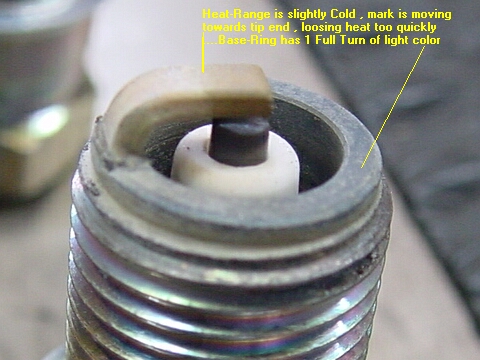
Heat Range = Ground Strap, the ground strap indicates the heat-range of the spark plug. If the "color" of the ground strap "changes" too close to the ground strap's end, (which is above the center electrode), then the heat-range is "too cold" , meaning that the strap is loosing heat too quickly to the base ring, and is not able to burn off deposits until near its end. If the "color" of the strap changes near where it is welded/attached to the base ring (last thread ring), then it means that the plug heat-range is "too hot", because heat is not being tranferred/cooled from the strap to the base ring quickly enough !!!! The strap might begin to act like a "glow-plug", eventually causing preignition and/or detonation later on. Proper heat-range is when the "color" is at the half-way point on the strap, neither too cold or too hot.
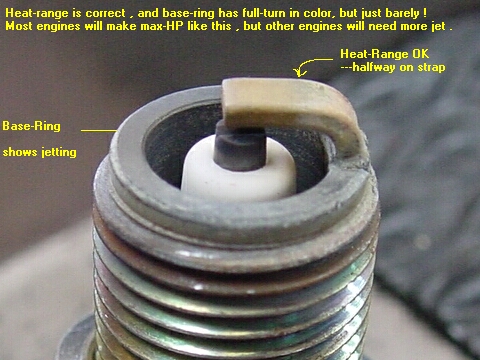
A spark plug only functions completely when its center electrode temperature is between these temperatures of about 500°C and 950°C.
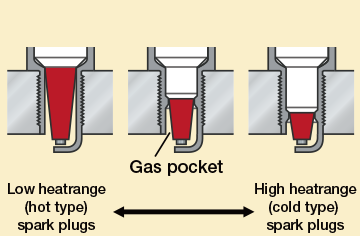
The following examples detail the typical temperatures of various combustion-related engine parts during normal operation:
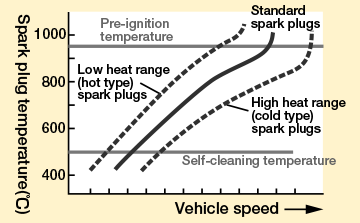
"The most commonly known flammable liquid is gasoline.
It has a flash point of about −50° F (−65° C). The ignition temperature is about 495° F (232(232° C) [sic], a comparatively low figure."
The temperature of the burning gases inside the combustion chamber is typically around 2,800° F. In a diesel engine, this temperature remains fairly steady. In a gasoline-powered engine, the temperature can climb to 4,500° F or more under certain circumstances. However, the vehicle's engine cooling system keeps the walls of the combustion chamber at a temperature of between 265° F and 475° F.
 www.denso.com
www.denso.com

 www.quora.com
www.quora.com
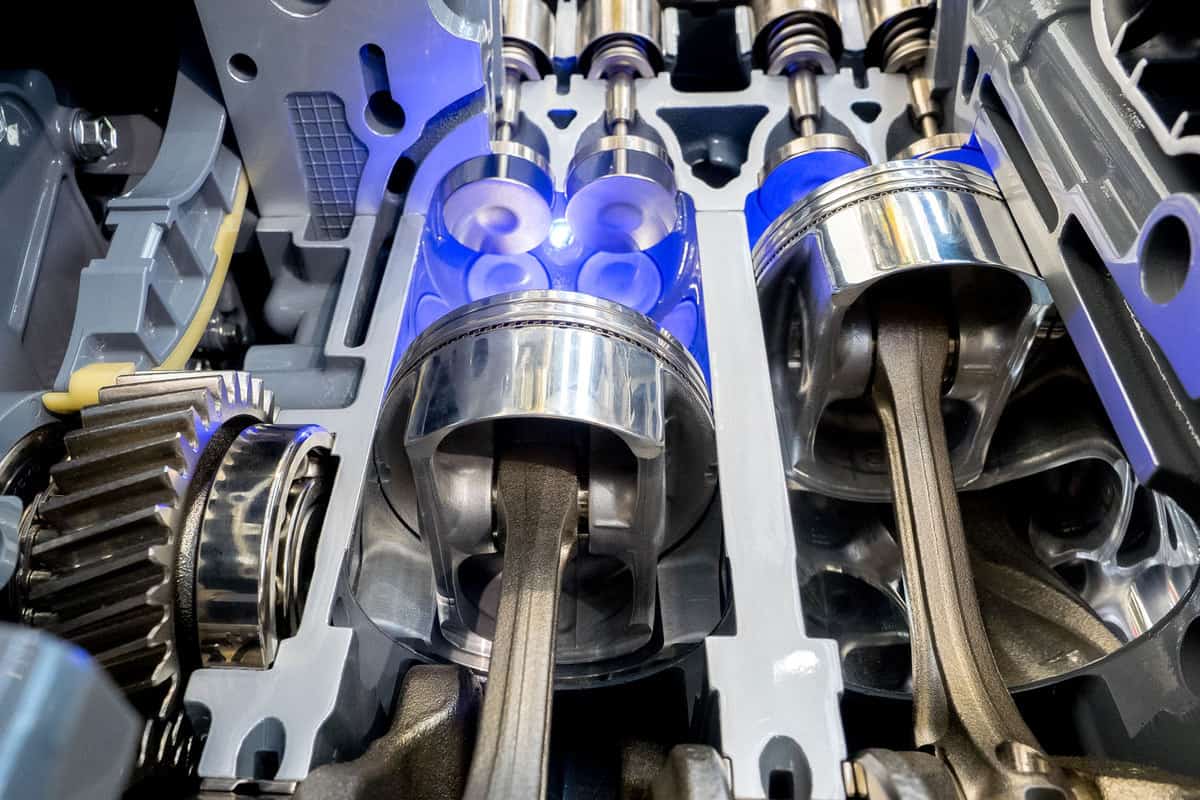
 vehq.com
vehq.com
 www.denso.com
www.denso.com
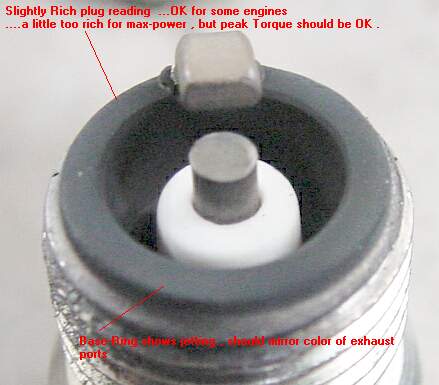
Jetting = the air/fuel mixture ratio shows up on the base ring (the last thread ring, it has the strap welded to it). You want a full turn of light soot color on the base ring!!! If you want to tune for max. power, then you want 3/4 to 7/8ths of a full turn of light soot color to show up on the base ring, but this is on ragged-edge of being too lean, but will make the most HP on most engines. To be safe, leave it at a full turn of light soot color. If the base ring has a full turn of color, but there are "spots" of heavy build-up of "dry soot" on top of color, then jetting is too rich .
NOTE> If the base ring has a full turn of color with some spots of heavy dry soot, then jetting is too rich, REGARDLESS, if the porcelain is "BONE-WHITE", jetting is still TOO RICH !!! NOTE> Do not look at the porcelain to read jetting !!!
Preignition/Detonation
Porcelain = the porcelain shows up preignition/detonation, it will not accurately reveal jetting/air/fuel ratios. To look for the first/beginning signs of detonation, search the white porcelain for tiny black specks or shiny specks of aluminum that have fused to the porcelain. When detonation occurs, part of the air/fuel mixture explodes instead of burning, the explosion is heard as a "metallic knock", this audible knock is the result of a sound shock-wave, this shock wave travels back and forth across the clearance volume "disrupting" the cooler boundary layer gases that cover the entire clearance volume area. This disruption allows "more" heat to be transferred into parts, especially, domes/piston tops,...along with the very rapid rise in pressure like a hammer blow, pistons can get torched with melted sides and holes !!! With the early signs of detonation, the shock-wave will also rattle rings causing the tiny amounts of oil that now gets by rings, to be fused to the white porcelain as tiny black specks, also fused as specks are soot that was clinging to clearance volume surfaces in the relatively "still-air" of the boundary layer. One step beyond the black specks, will be tiny specks/balls of aluminum coming off the pistons that will be fused to white porcelin,....the next step to be reached is occasional pieces of the porcelain being broken-off as detonation gets worse, ETC. Soon after that are holes, blown head gaskets, broken connecting rods, ETC.
NOTE> additional signs of beginning detonation are piston rings. By comparing ring's "free-diameter" to "out-of-box" free-diameters of new unused rings will reveals beginnings of detonation before much harm is caused !!! This is a result of the above previous explanation about heat being transferred more readily because the of the relatively insulating/cooler boundary layer being disrupted by the shock-wave. A piston ring is a simple spring, when a spring is over-heated it will loose tension.
Center Electrode = the very tiny sharply defined porcelain -"ditch" that encircles the center electrode, will also show up early signs of preignition/detonation and the wrong heat-range. Look for signs of the ditch beginning to be filled up with melted porcelain, you will need a 5x or 10x magnifying glass.
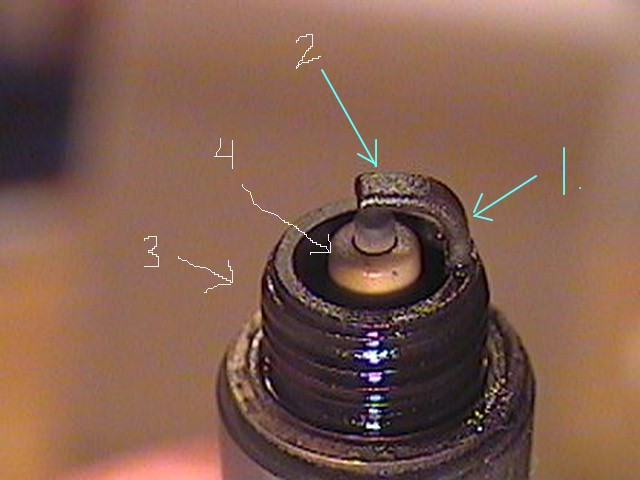
Lets analyze this plug, sorry the numbered points aren't clear but it's 1-4 you can figure it out.
#1 Is a timing indicator, you'll see a definite color change on the ground strap, it doesn't show well here but you can still see it right about at the arrow. Too much timing and the color change will be very close to the threaded body of the plug, too little and it'll be closer to the tip. Ideally we want it right in the apex or center of the 90 bend on the ground strap. This plug shows too much timing for the combustion chamber efficiency or octane level.
#4 Arrow shows another indicator of timing, you'll usually see a brown ring right at the tip of the porcelain area it should be a sharp and defined ring about .020 wide. Wider indicates not enough timing and any smaller , or only 1/2 way around or nonexistent as in this image is the second indication of too much timing in the motor.
#2 The tip of the ground strap is loaded with OIL deposits, fuel deposits are usually flat black in color and almost like a fine powdery deposit, this motor is leaking oil into the combustion chamber, bad valve guides, leaking valve covers allowing oil to seep through the plug threads, whatever it needs to be fixed.
#3 The threaded portion of the plug gives you the heat range, look at the threads you'll see that a few toward the tip are a dull burnt looking color the rest are black and shiny. You want about 2 threads showing the heat on the end of the plug and the rest of the threads to be shiny, this plug is impossible to read because of the oil mess. If you using a longer reach plug than this one 2.5 to 3 threads is optimum.
To increase the number of burnt threads increase the heat range of the plug, if you have 4-5-6 threads burnt you need to get a colder plug.
Looking at the color of the porcelain I'd give this carb a passing grade at the mid range and not to bad on the idle circuits although that dam oil leak makes it tough to really get a good read. I'll get some better shots for lesson 2.
I'm going to keep working on this page and try and get some real good shots of various plugs, we'll study each one and find the good and bad tell tales of each.
I'll also start pulling some plugs out of my race car at various settings and get pictures so we can see how jetting, timing and heat range affect the plugs in the same engine under the same conditions.
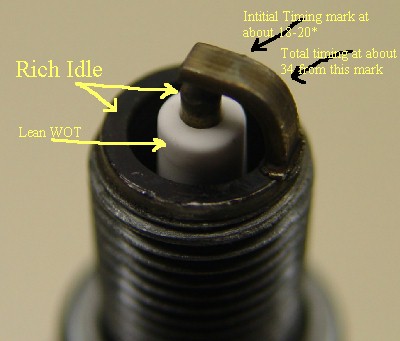
The plug is showing me by the deposits on the tip of the electrode and also the deposits right on the edge of the threaded body.
that it's slightly fat at idle.
The white porcelain is showing a lean condition at WOT, it's not too far advanced as the total timing mark or color change is right in the apex of the ground strap curve. The Idle timing is shown by the triangular hazing up on the flat of the ground strap and without even looking at the distributor specs I can tell you that the timing on this SB Mopar is about 18-20 initial and 34 total.
I would need a better picture of the threads to determine the heat range.
Changes:
I would try and lean it out just a touch at idle and up the jets by 2 points to fatten up the WOT circuit.
That slightly lighter color at the tip of the ground strap indicates too much gap, nothing serious but next time you change plugs I'd go to about a .036 gap from the current .040. Too much resistance caused by too wide of a plug gap can cause excessive heat on the tip which will shorten the life of the plug and really give you no benefits. I believe excessive plug gaps are not required on most Muscle and bracket cars, once you get into real big compression and major power you would open up the gap and replace plugs 2-3-4 times a year.
http://www.4secondsflat.com/Spark_plug_reading.html
http://www.strappe.com/plugs.html
http://garage.grumpysperformance.co...-with-ignition-knock-issues.14293/#post-72961
3
http://www.empirenet.com/pkelley2/sparkplugreading.html

The "Plug's Base Ring" = Jetting
The "Porcelain" = signs of preignition/detonation

Heat Range = Ground Strap, the ground strap indicates the heat-range of the spark plug. If the "color" of the ground strap "changes" too close to the ground strap's end, (which is above the center electrode), then the heat-range is "too cold" , meaning that the strap is loosing heat too quickly to the base ring, and is not able to burn off deposits until near its end. If the "color" of the strap changes near where it is welded/attached to the base ring (last thread ring), then it means that the plug heat-range is "too hot", because heat is not being tranferred/cooled from the strap to the base ring quickly enough !!!! The strap might begin to act like a "glow-plug", eventually causing preignition and/or detonation later on. Proper heat-range is when the "color" is at the half-way point on the strap, neither too cold or too hot.

spark plug info
spark plug info..SO!...read thru the links theres a ton of good info, but its spread over all the links, if you can get that skill mastered your well ahead of most guys who fail to take the time and effort to learn that skill guys frequently ask me what plug gap to use, Provided your ignition...
garage.grumpysperformance.com
A spark plug only functions completely when its center electrode temperature is between these temperatures of about 500°C and 950°C.

The following examples detail the typical temperatures of various combustion-related engine parts during normal operation:
- Intake valve: 475° F
- Exhaust valve: 1,200° F
- Spark plug: 1,100° F
- Piston face: 575° F
- Cylinder wall: 375° F

"The most commonly known flammable liquid is gasoline.
It has a flash point of about −50° F (−65° C). The ignition temperature is about 495° F (232(232° C) [sic], a comparatively low figure."
The temperature of the burning gases inside the combustion chamber is typically around 2,800° F. In a diesel engine, this temperature remains fairly steady. In a gasoline-powered engine, the temperature can climb to 4,500° F or more under certain circumstances. However, the vehicle's engine cooling system keeps the walls of the combustion chamber at a temperature of between 265° F and 475° F.
Heat Range | Basic Knowledge | SPARK PLUG | Automotive Service Parts and Accessories | DENSO Global Website
An explanation of the relationship between the degree of dispersion of the heat the spark plug is subjected to and vehicle speed.

What is the temperature inside the combustion chamber of an engine?
Answer (1 of 9): As there appears to already be some engineering based answers, I will defer from a scientific answer, and give you my real world aviation experience. Flying my PA-31–325 Navajo, it being equipped with two turbo charged, air cooled six cylinder engines producing 325 horsepower eac...

How Hot Does A Combustion Chamber Get In A Vehicle? [The Answer Might Surprise You!]
Whether you're a weekend DIY mechanic, a diehard gearhead, or just a vehicle owner curious about how your car works, you may want to know more about how the engine burns fuel to create power. Many common questions center on what causes engine overheating. You may be wondering just how hot it...
 vehq.com
vehq.com
Heat Range | Basic Knowledge | SPARK PLUG | Automotive Service Parts and Accessories | DENSO Global Website
An explanation of the relationship between the degree of dispersion of the heat the spark plug is subjected to and vehicle speed.

Jetting = the air/fuel mixture ratio shows up on the base ring (the last thread ring, it has the strap welded to it). You want a full turn of light soot color on the base ring!!! If you want to tune for max. power, then you want 3/4 to 7/8ths of a full turn of light soot color to show up on the base ring, but this is on ragged-edge of being too lean, but will make the most HP on most engines. To be safe, leave it at a full turn of light soot color. If the base ring has a full turn of color, but there are "spots" of heavy build-up of "dry soot" on top of color, then jetting is too rich .
NOTE> If the base ring has a full turn of color with some spots of heavy dry soot, then jetting is too rich, REGARDLESS, if the porcelain is "BONE-WHITE", jetting is still TOO RICH !!! NOTE> Do not look at the porcelain to read jetting !!!
Preignition/Detonation
Porcelain = the porcelain shows up preignition/detonation, it will not accurately reveal jetting/air/fuel ratios. To look for the first/beginning signs of detonation, search the white porcelain for tiny black specks or shiny specks of aluminum that have fused to the porcelain. When detonation occurs, part of the air/fuel mixture explodes instead of burning, the explosion is heard as a "metallic knock", this audible knock is the result of a sound shock-wave, this shock wave travels back and forth across the clearance volume "disrupting" the cooler boundary layer gases that cover the entire clearance volume area. This disruption allows "more" heat to be transferred into parts, especially, domes/piston tops,...along with the very rapid rise in pressure like a hammer blow, pistons can get torched with melted sides and holes !!! With the early signs of detonation, the shock-wave will also rattle rings causing the tiny amounts of oil that now gets by rings, to be fused to the white porcelain as tiny black specks, also fused as specks are soot that was clinging to clearance volume surfaces in the relatively "still-air" of the boundary layer. One step beyond the black specks, will be tiny specks/balls of aluminum coming off the pistons that will be fused to white porcelin,....the next step to be reached is occasional pieces of the porcelain being broken-off as detonation gets worse, ETC. Soon after that are holes, blown head gaskets, broken connecting rods, ETC.
NOTE> additional signs of beginning detonation are piston rings. By comparing ring's "free-diameter" to "out-of-box" free-diameters of new unused rings will reveals beginnings of detonation before much harm is caused !!! This is a result of the above previous explanation about heat being transferred more readily because the of the relatively insulating/cooler boundary layer being disrupted by the shock-wave. A piston ring is a simple spring, when a spring is over-heated it will loose tension.
Center Electrode = the very tiny sharply defined porcelain -"ditch" that encircles the center electrode, will also show up early signs of preignition/detonation and the wrong heat-range. Look for signs of the ditch beginning to be filled up with melted porcelain, you will need a 5x or 10x magnifying glass.

Lets analyze this plug, sorry the numbered points aren't clear but it's 1-4 you can figure it out.
#1 Is a timing indicator, you'll see a definite color change on the ground strap, it doesn't show well here but you can still see it right about at the arrow. Too much timing and the color change will be very close to the threaded body of the plug, too little and it'll be closer to the tip. Ideally we want it right in the apex or center of the 90 bend on the ground strap. This plug shows too much timing for the combustion chamber efficiency or octane level.
#4 Arrow shows another indicator of timing, you'll usually see a brown ring right at the tip of the porcelain area it should be a sharp and defined ring about .020 wide. Wider indicates not enough timing and any smaller , or only 1/2 way around or nonexistent as in this image is the second indication of too much timing in the motor.
#2 The tip of the ground strap is loaded with OIL deposits, fuel deposits are usually flat black in color and almost like a fine powdery deposit, this motor is leaking oil into the combustion chamber, bad valve guides, leaking valve covers allowing oil to seep through the plug threads, whatever it needs to be fixed.
#3 The threaded portion of the plug gives you the heat range, look at the threads you'll see that a few toward the tip are a dull burnt looking color the rest are black and shiny. You want about 2 threads showing the heat on the end of the plug and the rest of the threads to be shiny, this plug is impossible to read because of the oil mess. If you using a longer reach plug than this one 2.5 to 3 threads is optimum.
To increase the number of burnt threads increase the heat range of the plug, if you have 4-5-6 threads burnt you need to get a colder plug.
Looking at the color of the porcelain I'd give this carb a passing grade at the mid range and not to bad on the idle circuits although that dam oil leak makes it tough to really get a good read. I'll get some better shots for lesson 2.
I'm going to keep working on this page and try and get some real good shots of various plugs, we'll study each one and find the good and bad tell tales of each.
I'll also start pulling some plugs out of my race car at various settings and get pictures so we can see how jetting, timing and heat range affect the plugs in the same engine under the same conditions.

The plug is showing me by the deposits on the tip of the electrode and also the deposits right on the edge of the threaded body.
that it's slightly fat at idle.
The white porcelain is showing a lean condition at WOT, it's not too far advanced as the total timing mark or color change is right in the apex of the ground strap curve. The Idle timing is shown by the triangular hazing up on the flat of the ground strap and without even looking at the distributor specs I can tell you that the timing on this SB Mopar is about 18-20 initial and 34 total.
I would need a better picture of the threads to determine the heat range.
Changes:
I would try and lean it out just a touch at idle and up the jets by 2 points to fatten up the WOT circuit.
That slightly lighter color at the tip of the ground strap indicates too much gap, nothing serious but next time you change plugs I'd go to about a .036 gap from the current .040. Too much resistance caused by too wide of a plug gap can cause excessive heat on the tip which will shorten the life of the plug and really give you no benefits. I believe excessive plug gaps are not required on most Muscle and bracket cars, once you get into real big compression and major power you would open up the gap and replace plugs 2-3-4 times a year.
Last edited by a moderator:

